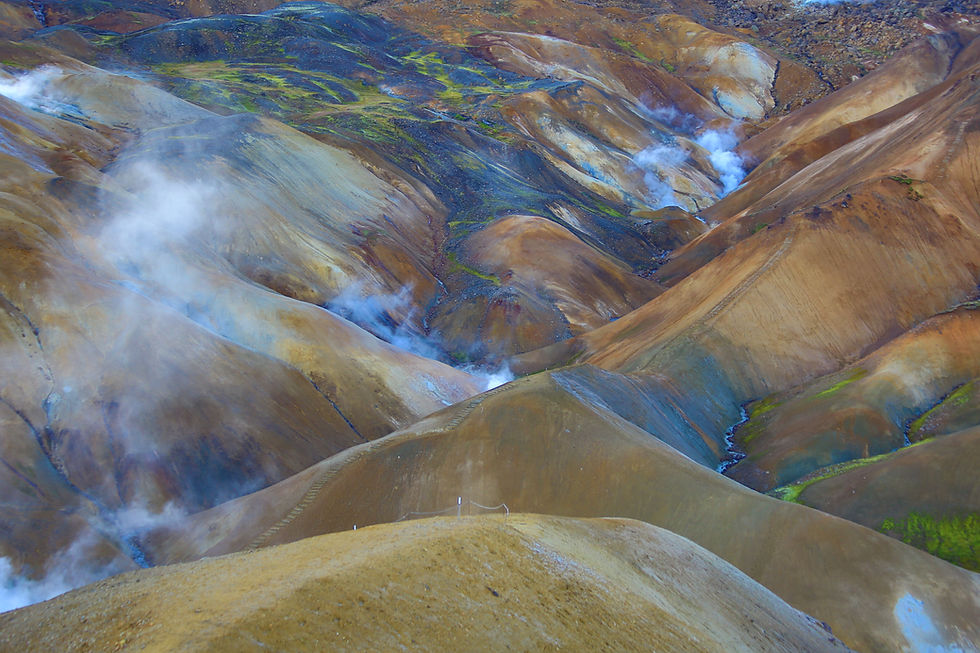Erosion At Work: Koko Crater & Koko Head, Oahu
- Feb 1, 2020
- 3 min read
Updated: Apr 19, 2024

On the southeast end of Oahu lay a series of volcanic cones and craters which were formed during the rejuvenation period that took place as far back as in 30-35,000 years ago to as early as 7,000 years ago. Some (geologically) are more visible and more striking than others; while some have left only a small visible remnant due to years of erosion.

From afar, Koko Crater is a classic example of a tuff cone, where its cinder cone was built upon layers and layers of ash from its previous eruptions. It is a smaller version of Mt. St Helens, where most of their ash and steam were blown horizontally rather than upwards. The magma inside Koko Crater's chamber met with underground water, and that caused a violent explosion where most of its ashes were scattered for miles. This can be seen today, especially along the coastal cliff sides and road cuts along Kalanianaole Highway. These layers of ash are termed as pyroclastic surge deposits.

You can also find bits and pieces of calcium carbonate (corals) lodged in the layers of ash. As erosion takes its toll on the top layers, more of the white corals will be exposed, giving the surface a strange pebbly wart like structures sticking out from the surface. You can also find salt sediments on these exposed surfaces, where the ocean's sea spray batters the "rock" day and night.
Another interesting geologic feature nearby is the Halona Blowhole. The blowhole is part of a lava tube created by flowing magma underground. As incoming waves forces compressed air through the narrow tube, it creates a water spray that rises high above the spout. Many locals and tourists flock to this geologic feature to pose next to the spout. This is a dangerous affair as the force of the water have at times lifted unsuspecting tourists who get too close to the hole high into the air.

Koko Crater and Koko Head have seen a lot of visitors in the past years. The Koko Crater Stairs hike, which involves climbing to it's top via 1048 wooden ties, is a hike that has seen the most action, so much so that many of it's old railroad wooden ties are now broken or simply missing. The last count of the ties puts it at about 800 steps left.
For the more intrepid adventurer, or foolhardy, whichever describes you best, is to start from Halona Blowhole, and climb to the rim by walking over a series of layered beds and over an eroded ridge that resembles a small arch. I consider this a walk into the past, where there are many geologic remnants awaiting to be appreciated and photographed.

Along the way, you can find little stones, or lapilli. These were formed during the explosive stage, when ash clumped together due to static electricity. This static current was created when particles rubbed against each other, creating a voltage differential or lightning. You can also find many basaltic rocks, some lodged and protrudes from the layers of ashes. These type pf rocks is quite easily identifiable as they are usually quite light and covered in minuscule holes.
An aerial view of Koko Crater and Koko Head reveals the many craters in the area. This includes Kahauloa, Nono'ula, Ihiihilauakea, Hanauma (flooded crater) and off course, Koko Crater.
The largest of all the craters seems to be Koko Crater at approximately 200 acres. Within its crater walls houses the Koko Crater Botanical Gardens.

As the elements of nature continues to batter and gnaw away at the geologic remains of Koko Crater and Koko Head, it is only a matter of time when these dominant features will ultimately be gone one day.















Comments